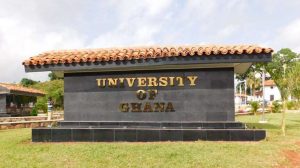Background
Over the last week or two, the issue of the quantum of the Minimum Capital Requirement (MCR) has however gained prominence notably because of the announcement recently made by the National Insurance Commission (NIC) to raise this requirement to GH¢50m ($10m) from the current level of GH¢15m ($3m), representing more than a 300% increase. 31st of December 2018 saw the end of the transitional period for the Banking Sector’s equivalent of the MCR to GH¢400m from GH¢ 120m.
This development within the Banking Sector has led to a parallel being drawn with this regulatory decision by the NIC, which has in turn generated a lot of public interest in the insurance sector. The concomitant public outcry that was associated with the Banking Sector’s increase in the minimum capital requirement obviously can be cited as the source of public interest in the significant upward revision in the quantum of the Insurance Sector’s MCR, as currently being proposed by the NIC.
In this article, I seek to discuss an insurance company’s capital requirement from the perspective of some of the major stakeholders in the Insurance Industry (i.e. Existing & Future Policyholders, Insurance Companies Management, Shareholders and the Regulator) and how these influence the level of capital an insurance company holds and possible implications this regulatory requirement might have on the industry and the economy as a whole. Now let’s roll.
The Policyholders’ point of view
Policyholders’ confidence in any Insurance Company is fundamentally based on the certainty that the insurance contracts will be fulfilled and eligible claims will be honoured without undue delay. The question, “is there enough money?” tends to serve as a basic and simply understood definition of financial soundness. The decision by the regulator to mandate an increase in the Minimum Capital Requirement of more than 300% will therefore serve as a greater boost to consumer and public confidence in the insurance industry.
After all, the underpinning element of consumer expectation is the assurance that, a company has enough funds for short and long term foreseeable, unforeseeable, catastrophic liabilities. Considering the technical nature of Insurance, where a tangible premium contribution into a pool is exchanged for an intangible promise of honouring claims upon the occurrence of the insured event, Ghanaians on the face of this requirement should not be much bothered. Yes, at least for now before I get to give my take!
The Insurance Companies Management point of view
Verily, verily, I tell you the truth, the major beneficiaries of this MCR are the Executives of the various insurance companies. Insurance Managers are under an austere performance obligation to meet sales targets in an open and incredibly competitive insurance market comprising target groups who have little or no appetite for insurance. It is an undeniable fact that less than 30% of insurance companies in Ghana make underwriting profits.
Operational expenses and Benefits or Claims payments are always higher than underwriting premium income which results in an underwriting loss. The availability of additional capital and possible interest income from invested assets to boost the bottom-line of their performance obviously will be the most welcome news of all time. On the other hand, Management have the onerous task of convincing shareholders to make this additional capital injection in a market characterized by huge underwriting losses resulting from poor underwriting discipline, high business acquisition and maintenance costs and a high cost of capital. This news of a possible increase in the MCR to Insurance Companies Management is definitely good news and a boost to their performance although this might be counteracted by the possible effect it can have on their key performance indicators relating to return on capital metrics.
The Shareholders’ point of view
Now here is the real deal. Convincing shareholders to inject additional capital in a venture that historically has produced less than RISK FREE treasury rate of return aside from the Insurance risk and other major risks the company face is likely to prove an arduous and uphill task. The only way out will be “because the regulator says so”. Per NIC’s annual report, this has always been less than the corresponding year’s prevailing treasury rates in Ghana and the overall picture seems to be getting worse year-on-year, in particular for life insurance companies (i.e. as per the table below).
Any requirement for additional capital injection to meet the revised MCR will therefore have negative implications for the return on capital metrics and possibly an adverse impact on the shareholding structure for existing shareholders. Whilst some shareholders will generously allow their existing shareholding to be diluted by not participating in any potential rights issues to raise capital, other companies access to the different sources of funding may be rather limited and hence will have no choice but to fold up, put themselves up for sale or potentially merge with other insurance companies.
Companies that make enough profit may decide not to declare a dividend but rather capitalize those profits to boost their available capital so as to meet the revised MCR. After the transitional period possibly after 2020, 90% of the Ghanaian Insurance Industry will be dominated by largely capitalized foreign multinationals just like what happened in the Banking sector. Shareholders definitely will not be happy about this development. In the end, I foresee job losses which is usually associated with mergers, acquisitions and fold ups in any sector.
The Regulator’s point of view
The underpinning mandate of the NIC as regulators in the insurance sector is to serve as the custodian of the public interest. In performing this taxing task of a supervisor, the NIC sets a Minimum Capital Requirement for new and existing insurance companies. From the regulator’s point of view, all actions necessary to ensure a sound insurance industry is welcome.
The major target problem for which this directive of a new MCR by the NIC is undercapitalization. Undercapitalization in an industry can lead to high/unhealthy competition and then a possible breakdown of the whole system when the capital buffer can no longer support the level of competition resulting in lower underwriting discipline and management of company expenses (i.e. acquisition and maintenance expenses). In short, when there is enough capital in an industry, the regulator is happy because customer confidence and satisfaction levels goes high which is the main objective of the NIC. From here, we can say the announcement by the NIC to increase the MCR is in order.
NB; the current supervisory approach of the NIC has been geared towards the global trend of a Risk Based Supervision framework characterized by Risk Based Capital (RBC) framework. An RBC framework fundamentally represents the capital resources required to support an institution to absorb the unexpected losses and shocks resulting from the inherent risks the insurance company is exposed to. Different companies face different levels of risk, an RBC framework is therefore designed to capture the commensurate level of required capital and determine the size of the capital buffer that an insurance company should have for the level of risk inherent in its business.
My Take
This is not the first time a Minimum Capital Requirement (MCR) is being used as a regulatory tool to checking the financial soundness in the Ghanaian Insurance Industry. Increase in the MCR provides customers with greater levels of comfort and confidence in the industry and further mitigates regulators concern about the insurance industry’s financial soundness at least in the short term. The only stakeholder who is not happy with this development possibly is the shareholder and I. Yes me! As the ability of insurance Companies to identify and manage their capital requirements efficiently becomes increasingly important in a highly competitive, international and riskfocused marketplace, regulatory authorities are also keenly interested in insurer’s capital management as capital is a key component of the solvency supervisory framework.
However, the era where regulators relied on increasing MCR as a major check on solvency is past and gone. Best practice requires that individual insurance companies maintain capital that is commensurate to the level of risk they carry. By 2020 when each insurance company in Ghana has fully complied with these regulations and recapitalizes to GH¢ 50,000,000 ($10m), Ghana will possibly be one of the most overcapitalized insurance industries in the world, and most likely the most overcapitalized. For example, the absolute minimum capital requirement prescribed by the pan-European Solvency II RBC regime is €3.2m for life and reinsurance companies and €2.2m for non-life companies. Over capitalization refers to instances where a company possesses an excess of capital in relation to its activity level and requirements. Simply put, over capitalization is more capital than actually required and the funds are not properly used.
Despite the perceived success of Bank of Ghana’s (BOG) directive in the Banking sector that implemented the increase in MCR from GH¢ 200m to GH¢ 450m, it is instructive to note that there is a varied difference between banking and Insurance operations and hence their peculiar inherent risks. Whereas banks have a major risk of a debt service ratio (the rate at which loans given out by banks are recovered), Insurance companies are primarily faced with Insurance Risk (i.e. including expense risk). Insurance risk in simple terms is the risk that an insurance company may not be able to honour its main objective of being in business.
Any situation that prevents an insurance company from paying claims is said to present a huge insurance risk and that is a great source of worry for insurance company’s management and regulators. I will be surprised if you think managers of insurance companies will use shareholders fund to pay claims. After setting working capital and the capital used to acquire assets for the company (e.g. office space, machinery etc), the rest of the capital is kept as a capital buffer to cater for all unexpected losses. In essence if a company is able to meet all its liabilities with a high degree of confidence and still has excess capital, then the question is why does the regulator still require that an insurance company inject extra capital?
My suspicions;
First and foremost the regulator is trying to take the easy way home. In 2012, the NIC adopted the Risk Based Supervision (RBS) approach. As part of this regime, individual insurance companies are expected to hold risk capital considering the nature, scale, complexity and applicable risk ratings. Within the risk based approach, capital is defined as the regime where insurers must have a certain amount of capital, depending on the riskiness of their investments and insurance operations (Rejda, 2012). This new solvency regime has been communicated and been implemented in the Supervision Department Returns (SDRs) which are submitted by insurance companies to the NIC on quarterly and annual basis.
“SDR 1”, clearly outlines how Core and Non-Core Capital feeds into the calculation of an ultimate Capital Adequacy Ratio (CAR) measure which must be more than 150%. Just like the Solvency II regime, which is the relatively new pan European insurance regulatory regime, the Risk Based Supervision approach must address any capital deficiencies on an individual company level. A typical question will be, why would the NIC require a new insurance firm that has no policyholder liabilities on its balance sheet at inception to hold such vast amounts of capital (i.e. which is several multiples of its working capital and planned new business over say the next 3 years) just as an insurance company that has been in existence for several years and has significant policyholder liabilities on its balance sheet? Is risk no longer important?
What happened to the corresponding cost of holding excess capital without being adequately compensated to get a better ROE metric? Secondly, as an industry participant and keen observer, it is not clear to me at all as to the extent of the analytical work done by the NIC to calibrate the inherent risks within the Ghanaian life and non-life insurance industry before coming up with the revised Minimum Capital Requirement. A flat increase of the revised MCR to GH¢ 50m ($10m) for both life and non-life companies gives me great cause for concern as to the extent and the depth of the analytical work performed and the quantitative impact analysis that has gone into the decision to revise the MCR significantly upwards.
It is evident that a typical life insurance company that sells long term insurance products has different inherent risks exposures compared with that of a Non-Life Insurance Company that basically sells annually reviewable and renewable products. For instance, non-life insurance companies have the ability to easily reprice their insurance products should experience differ significantly compared with the underlying pricing assumptions relative to life insurance products where the premiums are guaranteed over the term of the insurance contracts.
Also, insurance companies engage the services of reinsurance companies (i.e. an insurer’s insurer) to further secure their ability to pay claims when they fall due. Another level of comfort is the fact that industry professionals, such as actuaries, are made to certify technical provisions which is meant to serve as a prudent reserve on the balance sheet of every life and non-life insurance company to ensure that an adequate level of assets has been set aside so that claims can be paid as they fall due with a relatively high level of confidence. After actuarially determining prices for insurance products and reserving for policyholder and other liabilities that may fall due, the residual risk should be well catered for by the excess 150% CAR requirement.
Unless, of course, the National Insurance Commission of Ghana does not now trust its own model! Last but not the least, the Commission did not consult much with stakeholders within the key stakeholders within the insurance industry, especially with professional bodies like the Actuarial Society of Ghana (ASG). Clearly they could have offered alternatives and helped with some form of quantitative impact assessment that would have resulted in a more acceptable revision to the MCR. In conclusion, it is my hope that this increase in Minimum Capital Requirement will boost consumer and public confidence and go a long way to increasing insurance acceptance and coverage in Ghana.
I however have zero hopes for any possible increase in penetration rate despite the potential expansion of the Ghanaian economy with more oil and extractive mineral discoveries. Again, I will humbly appeal to the NIC to reconsider reviewing the current solvency model to make room for a bespoke inclusion of the inherent risks that a typical life and non-life Ghanaian insurer might face. Until then, this is my opinion!
Article by Cosmos Amankwah Owusu (MPhil, BSc, Actuarial Analyst). The writer is an experienced actuarial analyst with many years of professional and research expertise in the sector. You may contact him at cosmosowusu@yahoo.com / 0242 32 2006








